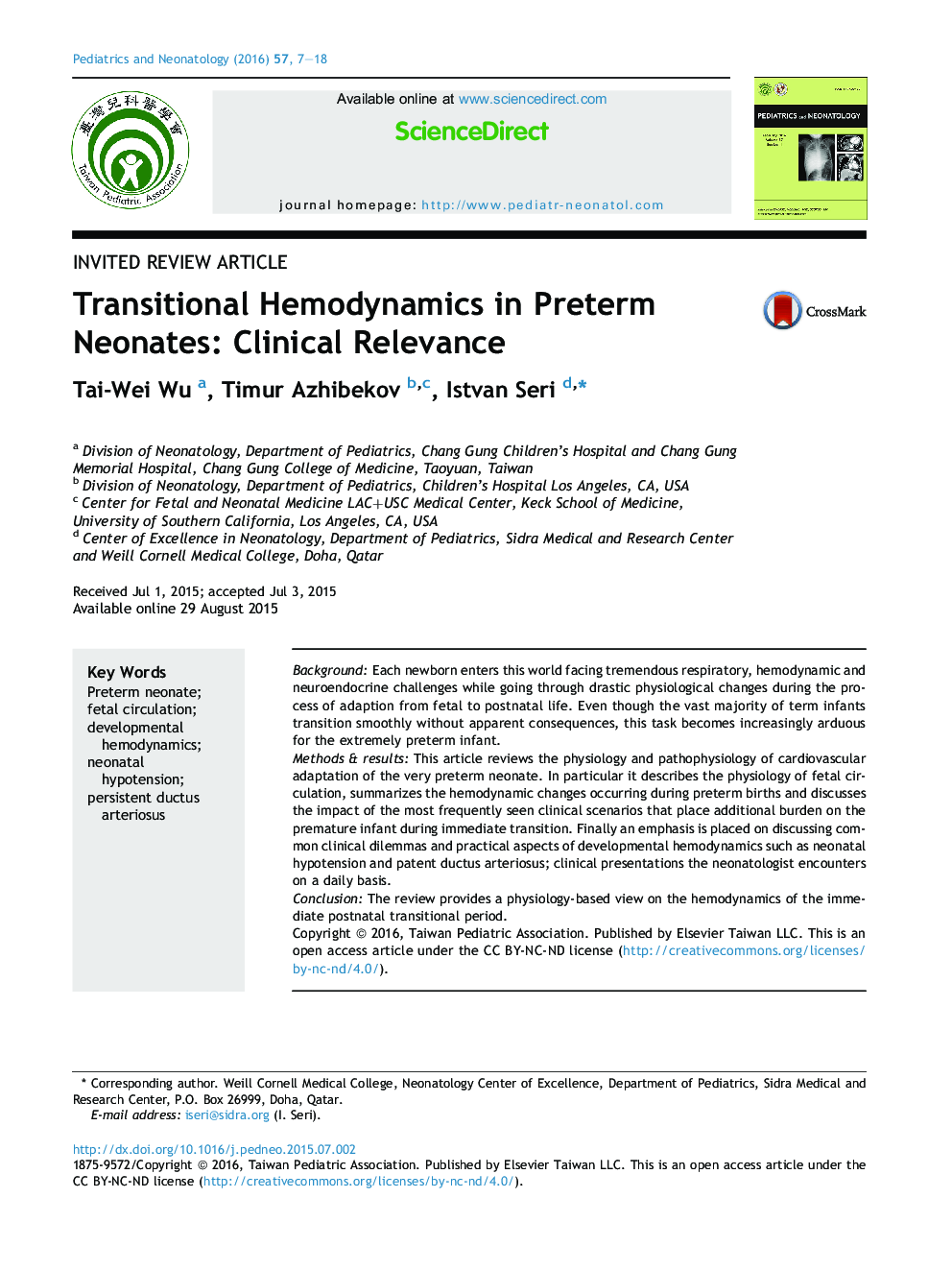| Article ID | Journal | Published Year | Pages | File Type |
|---|---|---|---|---|
| 4175085 | Pediatrics & Neonatology | 2016 | 12 Pages |
BackgroundEach newborn enters this world facing tremendous respiratory, hemodynamic and neuroendocrine challenges while going through drastic physiological changes during the process of adaption from fetal to postnatal life. Even though the vast majority of term infants transition smoothly without apparent consequences, this task becomes increasingly arduous for the extremely preterm infant.Methods & resultsThis article reviews the physiology and pathophysiology of cardiovascular adaptation of the very preterm neonate. In particular it describes the physiology of fetal circulation, summarizes the hemodynamic changes occurring during preterm births and discusses the impact of the most frequently seen clinical scenarios that place additional burden on the premature infant during immediate transition. Finally an emphasis is placed on discussing common clinical dilemmas and practical aspects of developmental hemodynamics such as neonatal hypotension and patent ductus arteriosus; clinical presentations the neonatologist encounters on a daily basis.ConclusionThe review provides a physiology-based view on the hemodynamics of the immediate postnatal transitional period.
